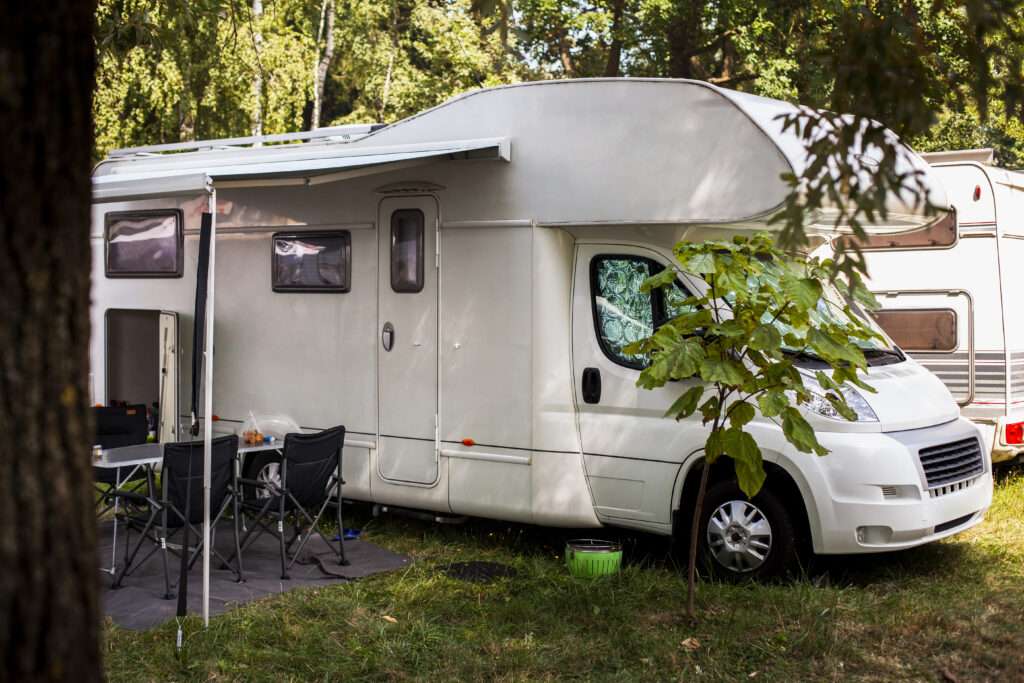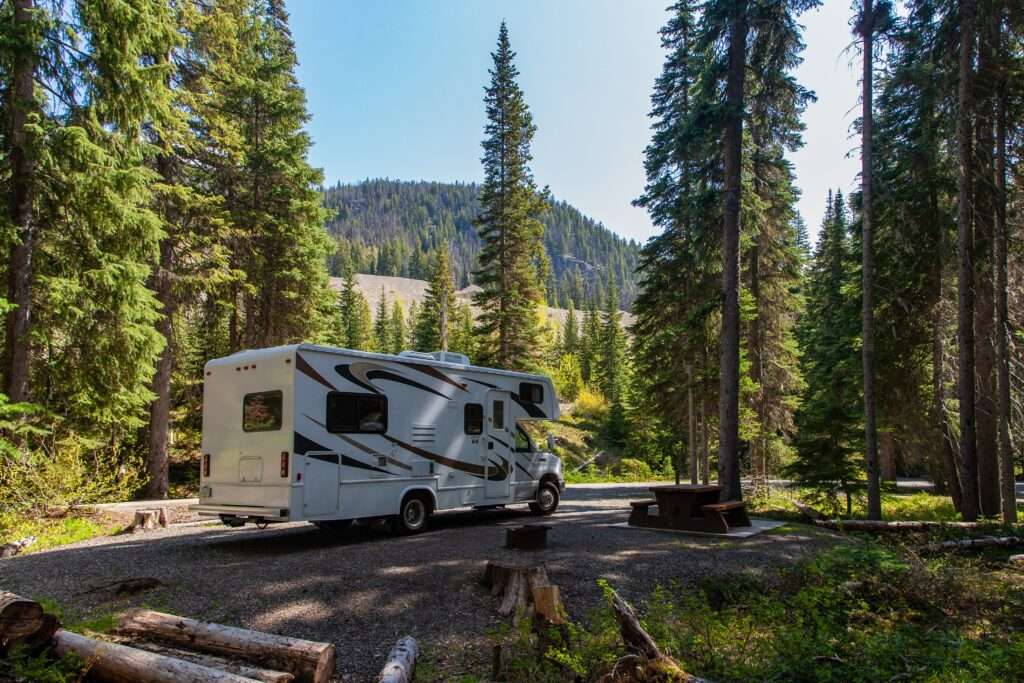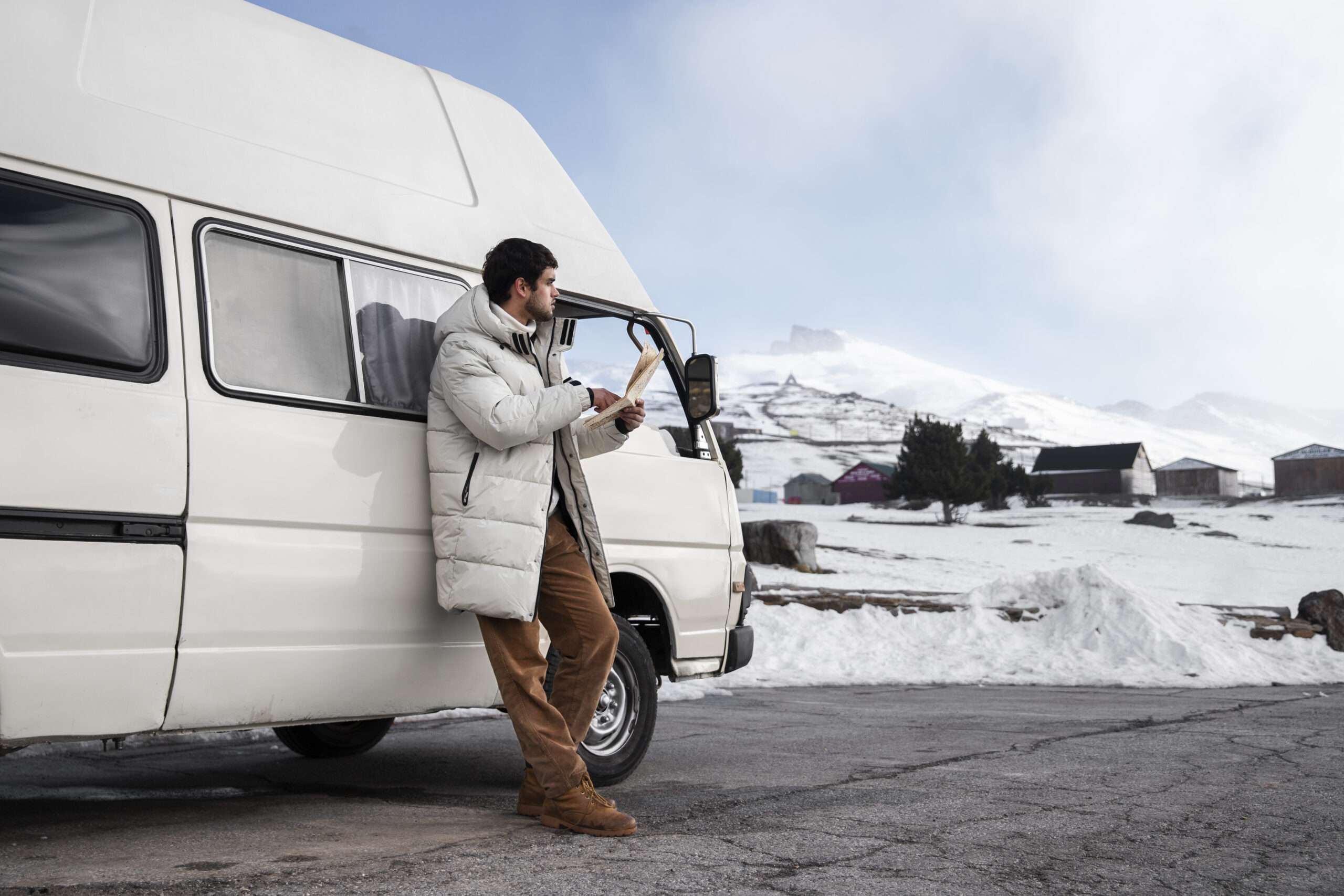With the crisp autumn air painting the leaves and whispering of winter’s approach, RV owners across the land face a recurring dilemma: to cover or not to cover? This question, seemingly simple, sparks heated debates in RV forums and campgrounds alike. For many, winterizing their beloved recreational vehicle involves meticulously preparing it for months of slumber, and the decision of whether to put it in a protective cover adds another layer to the pre-hibernation checklist. The debate surrounding RV covers in winter transcends a mere aesthetic choice; it delves into a complex world of protection, practicality, and potential pitfalls.
On one hand, proponents of RV covers paint a picture of shielded beauty: a pristine exterior safeguarded from the harsh elements. They envision snow gently sliding off a taut cover, rain harmlessly beading on its surface, and the sun’s harmful rays deflected, preserving the RV’s vibrant colors and preventing premature aging. They cite the cover’s ability to block debris like leaves, twigs, and bird droppings, minimizing the cleaning chore come spring. Even security finds its voice in this camp, with proponents suggesting the cover acts as a visual deterrent, obscuring valuables and discouraging unwanted attention.
But the other side of the coin reveals a different perspective. Skeptics of the cover’s magic tout its potential to become a moisture trap, fostering the growth of mold and mildew in the damp winter air. They warn of wind-whipped flapping, leading to tears and scratches on the RV’s delicate exterior. The time and effort of installation and removal, especially in challenging weather conditions, raise concerns for practicality. And let’s not forget the financial investment: the initial purchase, potential replacements, and maintenance add to the equation.
So, who’s right? Is the RV cover a winterizing hero or a villain in disguise? Unfortunately, there’s no one-size-fits-all answer. The decision hinges on a multitude of factors, from the climate’s severity to the type of RV and its storage location. The key lies in understanding both the benefits and drawbacks of using a cover, carefully weighing them against your individual needs and preferences. This intro aims to serve as a guidepost, navigating you through the labyrinth of “cover or not to cover” by presenting a balanced analysis and empowering you to make an informed choice for your RV’s winter slumber.

Benefits of Using an RV Cover in Winter
A. Shielding Your Fortress: Protection from the Elements
Imagine your RV, snug under a well-fitted cover, standing defiant against the winter’s wrath. Snow effortlessly slides off the taut fabric, shielding the roof and preventing leaks, a common culprit for water damage. Rain simply beads on the surface, sparing the exterior paint and decals from relentless soaking. Even the sun’s harsh rays, even though muted in winter, are deflected, preventing the fading and cracking that can prematurely age your investment. Think of the cover as a protective shield, extending the lifespan of your RV’s exterior materials and ensuring it emerges from hibernation looking its best.
B. Defending Against Nature’s Mess: Safeguards against Debris
Picture your RV sparkling clean in spring, thanks to the unseen hero – the RV cover. By acting as a barrier, it shields your vehicle from the winter’s messy offerings: leaves and twigs that can clog vents and scratch surfaces, bird droppings that stain the paint, and even pine needles that decompose and create unsightly splotches. This translates to significantly less scrubbing and detailing come spring, allowing you to spend more time enjoying your RV adventures.
C. Preserving the Sanctuary Within: Maintaining Interior Condition
The benefits of an RV cover go beyond the exterior. By buffering against extreme temperatures, it helps regulate the interior environment. The cover acts as an insulator, minimizing the harsh fluctuations in heat and cold that can stress materials and contribute to condensation build-up. This, in turn, protects your precious upholstery and interior finishes from cracking, warping, or fading. Additionally, with less exposure to direct sunlight and its damaging UV rays, the risk of mold and mildew growth inside the RV is significantly reduced, ensuring a healthier and more welcoming environment when you’re ready to hit the road again.
D. A Cloak of Security: Deterrence and Peace of Mind
While not foolproof, an RV cover can offer a layer of security and deterrence. Covering your vehicle can obscure valuables from sight, potentially discouraging casual theft or vandalism attempts. This peace of mind, especially for RVs stored in open areas, can be invaluable and contribute to a more enjoyable ownership experience.
E. Beyond the Basics: Additional Considerations for Cover Effectiveness
Remember, not all covers are created equal. The type of material and construction significantly impact its effectiveness. Opt for breathable fabrics that allow moisture to escape while preventing rain, snow, and debris from entering. Consider features like reinforced tie-downs, elasticized hems, and adjustable vents to ensure a secure fit and proper airflow, vital for preventing moisture buildup and potential mold growth. Remember, securing the cover properly is crucial. A loose-fitting cover flapping in the wind can damage both the cover and your RV. By investing in a high-quality cover and ensuring proper installation and ventilation, you maximize the benefits and minimize the potential drawbacks.

Drawbacks of Using an RV Cover in Winter
While the benefits of RV covers in winter might seem tempting, it’s essential to acknowledge the potential drawbacks before making a decision. Just like any product, covers come with inherent limitations and require careful consideration.
A. The Price of Protection: Cost and Maintenance
Let’s face it, RV covers aren’t cheap. The initial purchase can be a significant investment, depending on the size, quality, and material of the cover. And let’s not forget the possibility of needing replacements over time due to wear and tear or weather damage. Additionally, covers require cleaning and storage when not in use, adding to the overall cost and effort involved. Improper use or exposure to strong winds can also lead to tears and repairs, further impacting your wallet. Remember, the initial price tag is just the first chapter; factor in potential replacements, cleaning, and storage costs when making your decision.
B. From Breezy Bliss to Installation Blues: Challenges of Use
Installing and removing an RV cover, especially in less-than-ideal weather conditions, can be a time-consuming and physically demanding task. Battling with wind, maneuvering the cover over your RV, and securing it properly can test your patience and require a good amount of effort. If you have physical limitations, this aspect might be a significant drawback. Consider seeking help or opting for alternative solutions if the installation process seems daunting.
C. Trapped Moisture: A Breeding Ground for Trouble
Moisture trapped under a cover can become your RV’s worst enemy. While some covers claim breathability, improper ventilation can still lead to condensation build-up, creating a perfect environment for mold and mildew growth. This not only damages your RV’s interior but also poses health risks. Fabric covers, compared to breathable materials like Tyvek, tend to retain more moisture, requiring extra vigilance and frequent ventilation checks. Regularly monitoring the cover’s interior and ensuring proper airflow through strategically placed vents are crucial to avoid this potential pitfall.
D. When the Wind Whispers Destruction: Abrasion and Damage
Imagine a poorly secured cover whipping in the wind, its fabric chafing against your RV’s exterior like sandpaper. This scenario, unfortunately, is a real possibility. Strong winds can rip even the sturdiest covers if not properly secured, leading to costly repairs. Additionally, the constant flapping can cause minor scratches and abrasions on your RV’s surface. Investing in a well-fitting cover with secure tie-downs and considering additional windproofing measures can significantly mitigate these risks.
E. Beyond the Cover: Exploring Alternative Solutions
Before jumping on the cover bandwagon, explore alternative storage options. Covered storage facilities offer year-round protection from the elements, eliminating the need for a cover but potentially incurring higher storage fees. Garages or carports can also provide similar protection, depending on their suitability and accessibility. Weighing the cost, availability, and convenience of these options against using a cover will help you make an informed decision that aligns with your specific needs and budget.
Remember, the drawbacks of using an RV cover aren’t dealbreakers, but they are crucial aspects to consider before making a choice. By understanding these potential challenges and implementing preventive measures, you can minimize the risks and maximize the benefits of winterizing your RV with a cover.

Deciding Your Fate: Unveiling the Key Factors
Like a detective piecing together clues, your decision on using an RV cover in winter hinges on understanding several critical factors. By carefully examining these aspects, you can unlock the path to the most suitable choice for your beloved vehicle.
A. Mother Nature’s Fury: Climate and Winter Severity
The first clue lies in the hands of Mother Nature. Consider the climate you dwell in and the winter’s typical severity. For regions experiencing heavy snowfall, icy blizzards, and persistent rain, an RV cover can be a lifesaver. It shields your vehicle from the relentless assault of these elements, preventing leaks, water damage, and premature wear. However, if your winters are mild, with minimal snowfall and temperatures rarely dipping below freezing, the need for a cover might be less crucial. Remember, local weather patterns and historical extremes within your specific region hold valuable clues. Don’t base your decision solely on generalized winter descriptions; delve deeper into your area’s nuances.
B. The Canvas and Its Context: Type of RV and Storage Location
Next, inspect the canvas, or rather, the type of RV you own. If you have a fiberglass RV, its porous nature makes it particularly susceptible to moisture damage. In this case, a cover acts as a protective umbrella, shielding it from rain, snow, and condensation. However, for aluminum RVs, the benefits might be less significant due to their inherent weather resistance. The storage location further unveils secrets. If your RV rests exposed in an open field, facing the brunt of winter’s wrath, a cover provides much-needed protection. Conversely, if it resides in a covered carport or a sheltered garage, the need for an additional cover might be less compelling. Analyze your storage environment and tailor your decision accordingly.
C. Decoding Your Desires: Individual Needs and Preferences
Finally, take a deep dive into your own needs and preferences. Do you value convenience and time-saving solutions? If so, the ease of throwing on a cover before winter and removing it come spring might hold significant appeal. However, be prepared for the initial investment and potential maintenance costs associated with covers. Are you comfortable battling windy conditions for installation and removal? If not, exploring alternative solutions like covered storage might be wise. Ultimately, your personal comfort level with using or not using a cover plays a crucial role in the decision-making process.
D. Unveiling Hidden Knowledge: Consulting Experts and Reviews
Don’t embark on this quest alone. Seek advice from experienced RV owners in your region who can share their insights based on firsthand experience. Consult with RV dealers familiar with local weather patterns and specific cover recommendations. Additionally, delve into online resources, reading user reviews and researching the performance of different cover brands and materials. By tapping into the collective knowledge of others, you can gather valuable perspectives and make an informed decision that aligns with your unique needs.
Remember, the “cover or not to cover” dilemma is less about a definitive answer and more about finding the most suitable solution for your specific situation. By carefully considering the climate, your RV’s characteristics, your own needs, and seeking expert advice, you can unlock the right choice for your winterizing journey.
Conclusion
As we reach the crossroads of winterization, the lingering question remains: to adorn your RV in a protective cover or let it brave the elements uncloaked? The journey through this intricate debate has unveiled a tapestry of arguments, woven with threads of both potential benefits and inherent drawbacks.
On the one hand, advocates for the cover champion its ability to shield your RV from winter’s wrath. From the relentless rain and snow to the scorching sun’s fading touch, the cover promises protection for your vehicle’s exterior, safeguarding against leaks, debris, and premature aging. The benefits extend beyond the surface, with some covers minimizing temperature extremes inside, protecting upholstery, and deterring unwanted attention. However, this cloak isn’t without its shadows. Concerns about trapped moisture, wind damage, and the initial investment cast a cautious hue over this path.
Those opting for a cover-free journey highlight the cost and maintenance involved, the potential installation challenges, and the risk of improper ventilation leading to mold growth. Additionally, some argue that relying solely on the elements to toughen their RV fosters a sturdier, more resilient vehicle.
Ultimately, the decision rests not on a universal answer, but on the unique threads of your individual circumstances. Consider the climate you face, the type of RV you own, and its storage location. Reflect on your priorities: do you value convenience and protection, or are you cost-conscious and comfortable with a more hands-on approach? Seek advice from experienced RV owners and research different cover options.


